
views
As with How to Determine How Many Acres of Pasture are Required For Your Cattle, the calculations made give you a general guideline of how many animals you can stock a pasture with for a certain period of time. An example is provided to help you understand how the formulas work so that you can apply them to your own land base.

Determine the amount of land you have available. This will be the first of one of the most important pieces of information you need in order to find how many cattle you can graze. This number can be in acres or hectares. For example, you may have a 100 acres available for grazing. You can even work with as little as one acre. As long as you stick with one unit of measure (acres versus hectares), you are able to work with as much or as little land as you wish.
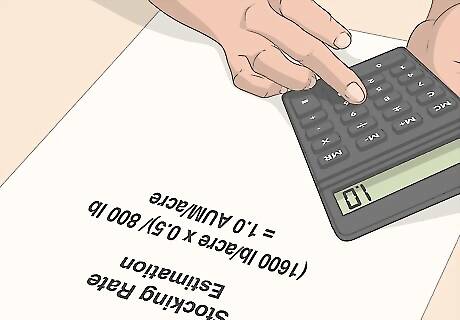
Calculate the estimated stocking rate for your area. The stocking rate for your location is determined by the amount of forage you have in terms of pounds per acre or kilograms per hectare, the utilization rate expected by the animals based on pasture condition, and how much of that forage is utilized by a standard animal unit for one month. For more information on how to calculate the stocking rate for your operation, please see How to Calculate Stocking Rates for Your Pastures. For example, you may have a stocking rate of only 1.0 AUM/acre.
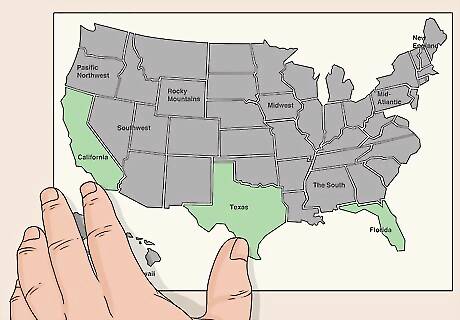
Determine how long you want the cattle to be on the land. Typically this is measured by months, not days. For most North American areas (not including the tropics) a typical grazing season is between 4 to 6 months. More southern grassland areas, like in California and down into Florida and Texas, are more flexible with being able to graze for 12 months a year. Thus, let's assume you live an area where you are only wanting to graze this 100 acre parcel of land for four months.
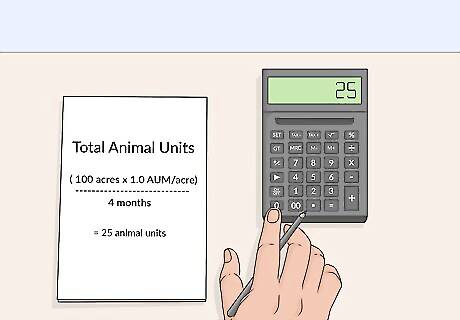
Determine the number of animal units that can graze on your piece of land. Remember, one Animal Unit (AU) is equal to one 1000 pound (454 kg) cow with or without a calf. This is the standard unit used in all stocking rate calculations, regardless what animals you actually have. Thus, the resulting number will be in terms of this standard unit, not the actual average size of the cows to be grazed on your piece of land. The calculation to adjust for animal size is done in the following step. To determine the number of animal units you can graze on a piece of land us via this formula: Total Animal Units = (Pasture size [acres] x Stocking rate [AUM/acre]) / Length of grazing period (months) Therefore, as per our example, Total Animal Units = (100 acres x 1.0 AUM/acre) / 4 months = 25 Animal Units.
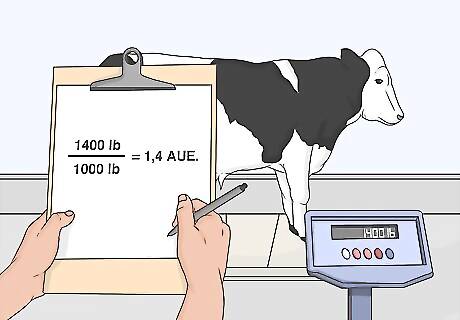
Adjust for actual weight of the cows to be grazing the piece of land. Most modern cows are not the same size as the standard animal unit, but rather between 1200 to 1800 pounds. For this example, if you are grazing cows that weigh an average of 1400 pounds each, then to adjust for animal unit equivalencies by weight, we simply divide the actual average weight of the cows by the weight of the standard animal unit, like so: 1400 lb / 1000 lb = 1.4 AUE.
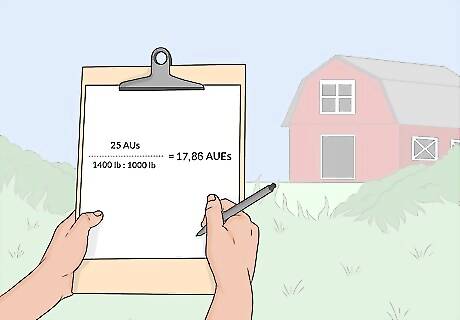
Determine the number of animal unit equivalents to graze your land. Taking the number of animal units calculated from step 4, which was 25 AUs, divide by the AUE calculated in step 5, to get 17,86 AUEs (or around 18 cows) on 100 acres for 4 months. To calculate, incorporating step 5: Animal Unit Equivalents = Number of AUs / (Actual animal weight / Animal unit weight); thus AUEs = 25 AUs / (1400 lb / 1000 lb) = 17.86 AUEs. In other words, you can have 18 cows (weighing an average of 1400 pounds) grazing your 100-acre parcel of land for four months.
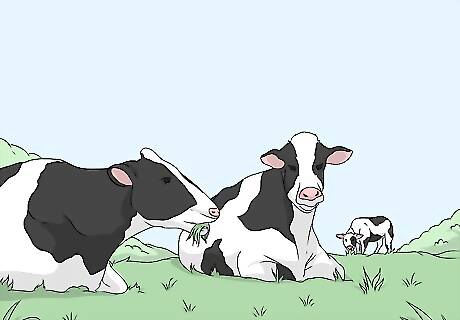
Put the cows out to the pasture to allow them to graze. Monitor pasture conditions and the grazing behavior of the cows. If they are not getting enough (as in, they do not have their heads down most of the time grazing, but moving around excessively), then it may be time to pull them out and move them to another area to allow the pasture to rest.It's important to understand that these calculations are merely a guide and an estimation. They are not exact, nor ever will be. It's up to you, as manager, to pay attention to the resource (forage) the cows need in order to both keep your cows happy, and not cause significant damage to the land.


















Comments
0 comment